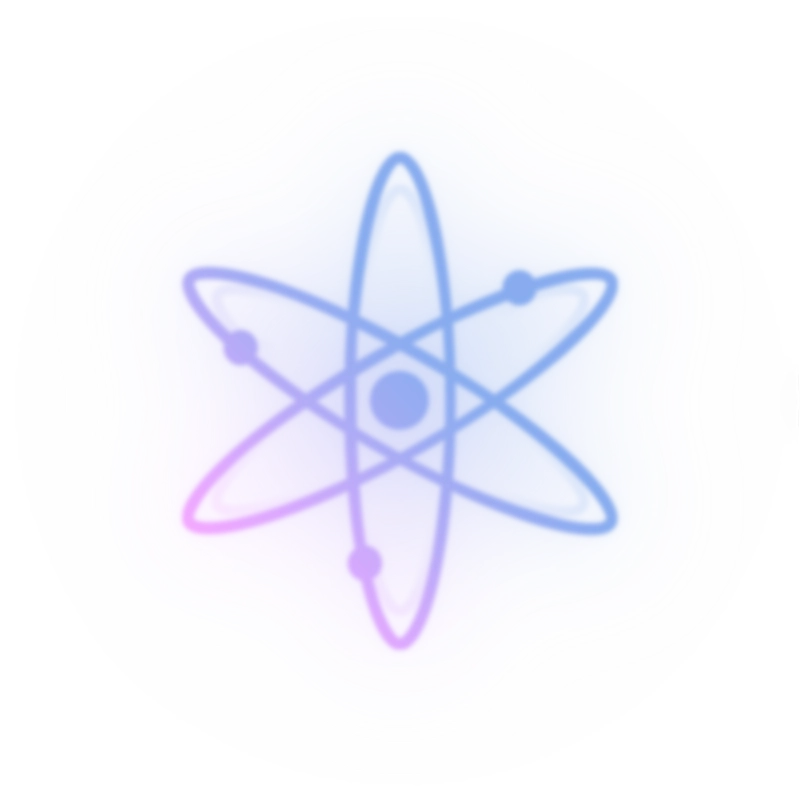Investing in crypto-assets carries risks of liquidity, volatility, and partial or total capital loss. Crypto-assets held are not covered by deposit and securities guarantee mechanisms.


Sign up for our newsletter
Partners
Coinhouse
Our accounts
Coinhouse
Coinhouse SAS with a capital of €210,000, RCS Paris 815 254 545, headquarters: 14 Avenue de l'Opéra 75001 Paris – support@coinhouse.com. Registered with the AMF for activities related to the purchase/sale of digital assets against legal tender, the exchange of digital assets for other digital assets, and the custody of digital assets for third parties under the registration number: E2020-001.
Coinhouse payment solutions
Company registered with the Paris RCS under the number 914 384 557, registered with the Prudential Control and Resolution Authority as a payment service agent under the number 727503 of the electronic money institution Treezor, headquartered at 33 Avenue de Wagram, 75017 Paris.
General conditions, disclaimers and legal documents.



The idea for Cosmos was born in Jae Kwon ‘s mind back in 2014. Observing the blockchain networks already in operation at the time, he thought that a different implementation, one that blended mechanisms to cope with the so-called Byzantine Fault Tolerant (BFT) problem – i.e. being able to continue operating even if nodes failed or acted maliciously – with a secure Proof-of-Stake system, would be effective in the context of public blockchains. In 2015, he met Ethan Buchman. The two men teamed up to work on a first implementation of Jae’s idea: Tendermint (which became Ignite in February 2022). Tendermint’s White Paper quickly laid the foundations for a high-performance, transparent, interoperable and auditable BFT protocol, flexible enough to support a variety of applications for individuals, private companies and public organizations, while also being capable of supporting decentralized money.
Tendermint software makes it possible to launch new blockchains and develop related applications in any language, but above all to make them communicate with each other! The following year, the idea of testing the Tendermint protocol in practice was put forward, and the Cosmos Network White Paper was published. In its very first version, the project was named “Gnuclear”, and its white paper described an interoperable blockchain system that would be 100% decentralized, and based on the Tendermint consensus protocol. With the help of the community, the idea gradually evolved and was then renamed Cosmos.
In 2017, Jae Kwon began looking for funding to bring the project to fruition. Private sales of tokens are organized at the beginning of the year, followed by an ICO (initial coin offering) over the summer. The Swiss-based Interchain Foundation managed the ICO to support research into both Cosmos and Tendermint, raising $16.8 million in just 30 minutes. ATOMs, the native cryptocurrency of the system’s central blockchain (called “Cosmos Hub”), were then introduced, and went off without a hitch for 10 cents. These native tokens of the Cosmos platform are initially launched to encourage the collaborative work of the people who participated in the birth of the blockchain network, and then as a second step to reward the work of the validators who are responsible for securing the Tendermint protocol.
The ATOM token is a crypto that also serves as a security mechanism to prevent misuse of the network, and as a governance system since token holders enjoy voting rights. Initial tests, carried out in autumn 2017, of both the technology and its consensus system showed (unsurprisingly) anomalies, which were gradually resolved by the research team. This essential step took around a year and a half to complete. The operation of the system was also thoroughly reviewed. Finally, on March 13, 2019, the Cosmos main network and its ATOM crypto were officially launched, and the very first block (genesis block) was generated.
Very quickly, the project is getting a lot of buzz, and the native token, ATOM, is getting listed on the major marketplaces.
On Binance, the largest crypto trading platform, from April 2019.
See the ATOM price live.
Cosmos Hub was founded in 2019 by the Tendermint Inc. team, led by Jae Kwon and Ethan Buchman, two pioneers in the blockchain space. Their vision was to create an interoperable network of blockchains, enabling different chains to communicate with each other in a decentralized and secure way.
Cosmos stands out for its modular architecture, which uses the Tendermint consensus protocol to offer increased scalability and rapid transaction finality. The Cosmos Hub team is made up of experienced developers and contributors from the open-source community, who continue to innovate to strengthen the Cosmos ecosystem and foster interoperability between blockchains.
Cosmos Hub functions as a central network in the Cosmos ecosystem, facilitating communication between different blockchains thanks to its Inter-Blockchain Communication (IBC) protocol. The Hub uses a modular architecture that enables decentralized, secure connections between independent blockchains, known as “zones”, which can exchange data and assets.
The Tendermint protocol, used by Cosmos Hub, guarantees fast and efficient consensus, and enables secure transactions with rapid finality.
This makes Cosmos Hub particularly well-suited to interoperability, as it enables blockchains to maintain their sovereignty while participating in a wider ecosystem. By facilitating these interactions, Cosmos Hub aims to become an “internet of blockchains”, where chains can interact freely without compromising their independence or security.
Cosmos, using the Tendermint protocols, presents itself as the Internet of blockchains. It offers functionalities enabling independent blockchains to rely on pre-established methods of consensus and governance, and to communicate easily by sending tokens or messages to each other. We speak of a network of blockchains. In Cosmos, the various blockchains are called “zones”. The aim here is to provide the necessary infrastructure and tools to enable developers to easily create their own blockchain, whether public or private, as well as their own applications, via the “Cosmos SDK”, which we’ll talk about later. These different blockchains can then communicate with each other using the protocols on which the Cosmos network is based. To help build these blockchains, zone developers are invited to use the “Tendermint Core” modules and change their parameters as required. Tendermint Core is made up of four modules, which will be described in greater detail below:
The Cosmos SDK is a suite of tools that blockchain developers can use to build the blockchain of their choice, drawing on Tendermint Core modules if they wish.
Entirely based on open-source software, this SDK makes it possible to create infrastructure and platforms based on Cosmos Hub.
For example, a Proof-of-Authority blockchain can be deployed while disregarding the Bounded Proof-of-Stake module.
Developers are also invited to develop new modules and make them available to the community.
This distinction between the application layer and the consensus and governance layers is interesting, as applications don’t necessarily have to be written in the same language as the consensus machine.
The network relies on the Application Blockchain Interface, or ABCI, to connect the application layer to Tendermint Core.
Applications can therefore be coded in any language.
Tendermint Core is used in particular in the first zone, the “Cosmos Hub”, which saw the light of day on March 13, 2019.
This is the most important blockchain in the Cosmos system, as it acts as a central register that must guarantee the amount of tokens in circulation on the platform at all times.
It stores data on everything that happens in Cosmos, and on all the actions carried out by the interconnected blockchains.
In concrete terms, if two blockchains linked to Cosmos share certain information or events, the resulting data is recorded in the Cosmos Central Hub to prove what happened.
In this way, proof of the interaction is preserved, making it impossible to deny.
The Hub obviously has to be the most decentralized and secure of zones, hence the use of proof of stake.
Tendermint is a delegated Proof-of-Stake protocol.
This means that for each blockchain in the system, there are a number of validators who guarantee their security and validate transactions.
On Cosmos Hub, ATOM holders can delegate their transactions to the validator of their choice.
The 100 validators with the most ATOMs in escrow, including their own and those of their delegates, validate the Hub’s blocks.
In a classic Byzantine Fault Tolerant (BFT) mechanism, the blockchain is resistant to attack as long as ⅔ of the validators on the chain validate the blocks honestly and fewer than ⅓ of the validators collude to attack the network.
Anyone can become a validator by setting up the necessary infrastructure and gathering enough ATOMs to put into escrow.
The implementation of Proof-of-Stake and the notion of slashing means that validators wishing to attack the blockchain are heavily penalized.
In Cosmos, if validators attempt an attack, they lose 5% of their stake, and this affects not only the validator’s assets, but also the assets of delegates who have placed their trust in the validator.
The fact that delegates are also penalized in the event of their validator making a mistake is unprecedented in delegate Proof-of-Stake.
This encourages extra caution when choosing a validator.
As a reward, ATOM holders who have delegated their assets to honest nodes are also rewarded with the assets issued on their validator’s block creation, unlike EOS-type systems where validators are the sole beneficiaries of block rewards.
The more funds validators have in escrow, the more likely they are to be elected to validate blocks.
Depending on the number of ATOMs sequestered for this purpose in the system, participants in block validation will earn between 7% and 20% per year, in ATOMs.
Money creation is stronger if a small portion of ATOMs are in escrow, which encourages asset holders to participate in the consensus.
This significant reward has given rise to a burgeoning industry in delegation services, initiated by Tezos.
Validators and their delegates also earn transaction fees.
The unique feature of Cosmos is that the Rewards and Fees module allows users to pay fees not only in ATOMs, the platform’s crypto, but also with any other asset of their choice.
This is very different from Ethereum, which charges transaction fees in ETH for all applications on its network.
Cosmos implements the protocol evolution process within the chain itself. The process is coded and described in the Tendermint Core governance module. Proponents of blockchain-based governance emphasize the fact that it dispenses with “forks” to evolve the protocol, giving users greater clarity over the canonical chain in the event of controversial decisions: each evolution of the protocol must be voted on by token holders, and the decision taken is that of the majority. In Tendermint Core, we talk about liquid democracy. By default, token holders give their voting rights to the validator to whom they delegate. However, should they disagree with the validator’s opinion, they can then give their own opinion and use the voting power of their tokens in favor of another decision. The different types of proposal that can be pushed via the governance module are as follows:
Tendermint Core features a module entirely dedicated to communication between blockchains, here called “Cosmos zones”.
This protocol is called Inter-Blockchain Communication, or IBC.
In other words, each zone in the Cosmos network is in fact an independent blockchain that exchanges messages with the Hub via the IBC.
The IBC is agnostic to the packets it carries.
This means that developers can define the specifications of their applications and use the IBC protocol to transfer tokens and data between zones, while being guaranteed, without going through a trusted third party, that the predefined rules of their applications will be respected.
For example, if a token is issued that is not fungible, this NFT will be transferred to another zone without the risk of it being replicated in two versions.
Authorization to transfer packets via the IBC is given by the source blockchain’s consensus algorithm.
For more details on how IBC works, please consult its specifications.
Interoperability via IBC is made possible by the instantaneous transaction finality enabled by the classic BFT consensus, which guarantees that a transaction validated in one zone can never be called into question in the next block, which would be problematic if an inter-zone transfer took place after a transfer.
A transaction is said to be finalized when it is considered strictly impossible to go back on it.
Proof-of-Work systems such as Bitcoin or Ethereum have a probabilistic finality: the greater the number of confirmations of a transaction, the greater the probability that it will be part of the chain that has accumulated the most work.
In BFT, once a block has been validated by a validator, all transactions included in the block are considered irreversible, even if they are dishonest.
It is the implementation of the proof-of-stake that has the role of preventing dishonest transactions.
This need for finality could make it impossible to integrate a blockchain such as Bitcoin or Ethereum as a zone in Cosmos, but the developers have thought of clever ways to achieve this.
The term “hard spooning” has come to mean “cloning” a blockchain into a Cosmos zone, getting rid of the parent blockchain’s consensus mechanism within Cosmos and creating bridges between it and its zone.
One of the first such projects, Ethermint, aims to replicate the Ethereum virtual machine on Cosmos.
Rather than competing with the parent blockchain, these zones, also known as “adapter zones”, are seen as complementary.
ATOM tokens are the native tokens of Cosmos Hub and play several essential roles in the Cosmos ecosystem:
Cosmos Hub’s projects in 2024 aim to strengthen its ecosystem and improve interoperability between different blockchains. Here are a few concrete elements:
Patience is always a virtue in cryptocurrencies. If you’re interested in this project as a financial investment, remember that participants in the 2017 ICO received their ATOMs at ten cents. Now, in the summer of 2022, the price of an ATOM, Cosmos’ crypto, was worth around $9: the first investors (those who helped fund the project) therefore multiplied their stake by 90 in USD, in the space of 5 years. And this despite the cryptocurrency crash that hit all investors in April 2022! Regular listings on marketplaces, starting with the addition of Cosmos (ATOM) on Binance in April 2019, are also giving a wide panel of investors the opportunity to hop on the moving wagon, and trade this crypto to take a share of profit.
ATOM has always been a promising crypto-asset with a place in any portfolio. What’s more, the Cosmos platform opens the way to extraordinary possibilities, making it likely to generate a great deal of use value in the future. For example, it could be possible to connect Ethereum’s popular decentralized finance ecosystem to the incomparable power of Bitcoin, through this interoperable system. This would have huge implications for the crypto world, in the opinion of many experts. If Cosmos ever manages to establish itself as the epicenter of all blockchains, enabling them to communicate, and become the “Internet of blockchains” touted by its designers, then the gains would be almost infinite. However, it should be noted that competitors are already beginning to appear, and Cosmos is no longer alone in the blockchain interoperability segment. These include Icon Foundation. In any case, the crypto sector has now reached critical mass, and there are at least several thousand blockchains (of varying degrees of success) in operation around the world.
Solutions such as Cosmos therefore have their place in the sector, facilitating the mass adoption of digital currencies and solving the many problems posed by the extreme decentralization of cryptos. It is undoubtedly through platforms like this one that the famous “Web 3” could finally become a reality… To wit: ATOM is one of the cryptocurrencies available on the Coinhouse platform, which can act as a broker to enable you to make an investment. You can buy this crypto by credit card, or alternatively by making a deposit as part of a bank transfer. In short, Cosmos tackles the problem of blockchain interoperability in an innovative way, thanks to the Tendermint protocol architecture on which it is based. By focusing on interoperability and reducing the barrier to entry for blockchain developers, the project takes an interesting position.
The ability to act as an extension to existing blockchain networks is a feature to keep an eye on as we turn our attention to the concept of sidechains. Today, ATOM has established itself as one of the major layer 0 projects.
Share the article


Download app